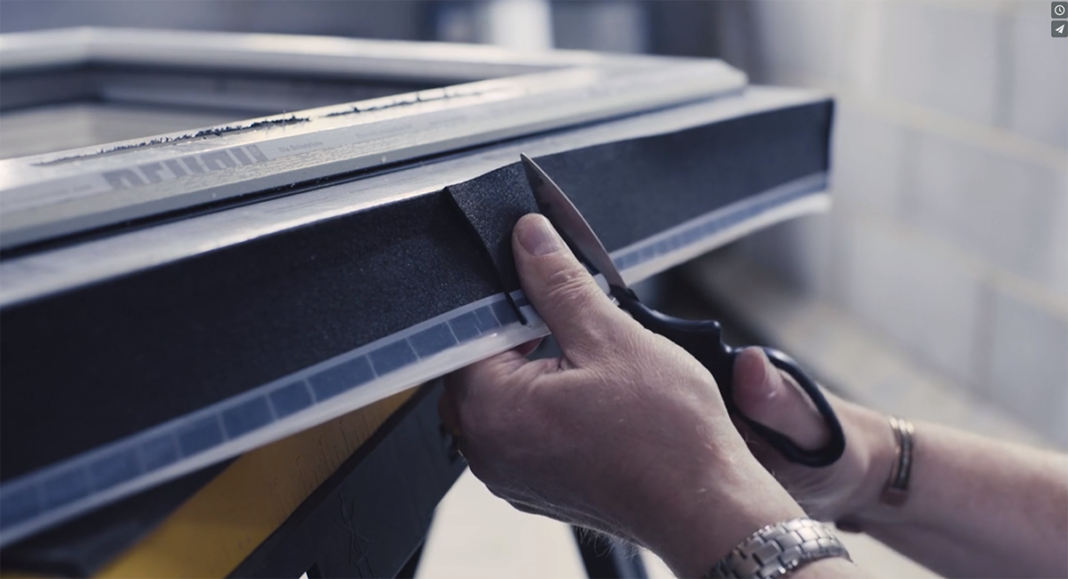
Andrew Swift, sales and operations manager, UK and Ireland – ISO-Chemie, offers advice for architects and designers specifying foam sealant tapes for windows and doors in residential homes and commercial buildings
ISSUES around airtightness and energy efficiency remain top of the agenda for architects and designers who specify products used in the construction of the houses and commercial buildings which we choose to live in and use for work purposes. However, it’s not all plain sailing – when it comes to keeping a seal on things, modern A++ rated windows and doors may feature good heat retention properties but it’s the area around the frame that so often fails, simply letting it back out again.
A large amount (21%) of heat can be lost from a building or house through the gap that’s found around the windows and the surrounding wall. This can be seen through thermal imagery. This gap is necessary to accommodate the natural expansion/contraction of the window frame as it reacts to the elements. But what isn’t required is the attendant heat loss. Currently, used wet seals like silicone have a very poor thermal value yet are widely still used.
Indeed, we only need to look to the USA, where studies show that an A Rated window installation can actually be rated below D if the gap isn’t properly sealed – doors and windows can account for upwards of 21% of the total air loss of the average house while adding the joints between walls, floors and ceilings, brings the figure up to 50%.
It’s clearly important that reducing heat loss is a priority in the battle to reduce energy consumption, cut costs and, ultimately, deliver the energy efficient properties and buildings we deserve. One approach to improve things is to use self-adhesive foam tapes, which are installed around the perimeter of the window or door frame and the surrounding wall, providing good resistance to driving rain as well as thermal and acoustic insulation and a robust air-tight internal seal as they slowly expand to fill the cavity gap.
What can foam sealant tapes be used for?
Expanding foam tapes such as ISO Chemie’s BLOCO 600 offer a ‘dry’ alternative to traditional wet sealants such as mastics, providing in the process a flexible and easy-to-use multi-functional product that delivers an effective airtight and driving rain-resistant all-round seal. They also offer thermal insulating properties to enhance energy efficiency performance of doors and windows. So, any construction gap can be filled with these tapes to allow for movement and retain the seal.
How can they be applied?
These tapes are easy to install by relatively unskilled operatives in any weather conditions. Gaps up to 100mm if needed can be closed and the tape covered over if needed.
How quickly can tapes be applied?
A major advantage is the application process. The tape is applied before installation, ensuring that the window can easily be installed from inside the building, avoiding the need to use costly and time-consuming scaffolding and ladder access systems. Moreover, the expanding foam contours to any shape or material to form a seal, creating a neat joint between the door/window and the fabric of the building, keeping occupants warm.
How well do the tapes withstand the elements?
Impregnated foams can be installed easily enough but with enough compression to provide a weatherproof seal to 600 Pa. At this level a joint can resist wind driven rain up to violent Storm Force 11 (68 mph winds). Certain grades – ISO-BLOCO One for instance – can be installed to give a weatherproof seal in excess of 1000pascal, which is hurricane force driven rain. In addition to the whole life economy, exact quantities can also be calculated so wastage is minimal.
What about accommodating building movement?
Impregnated tapes will also give a greater MAF (Movement Accommodation Factor) than wet sealants – with the ISO-BLOCO 600 range giving an average of 130%, allowing for a greater tolerance on site.
How long do they last?
The durability, life-long elasticity and UV stability of impregnated foam tapes mean that once installed, they are effectively maintenance free, with a life expectancy of 25 years plus.
Can sealant tape be used for passive house projects?
Absolutely – indeed, BLOCO-One is Passivhaus certified. Tape complies with appropriate standards such BS8213 CoP for window and external door set installations, and meets passive house performance criteria, specifically where perimeter seals around fenestration and movement joints in things like brickwork structures perform a vital function. Homeowners and building occupants will be assured that the U value of the ‘gap’ is at least as good as the window, but usually better-down to 0.6W/m²K.











